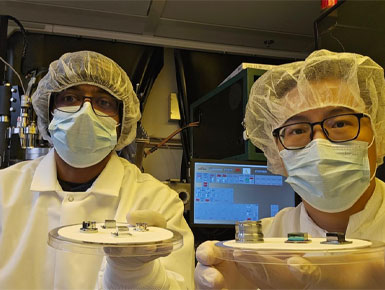USD Team Achieves Milestone in Germanium Detector Fabrication

These include planar, planar point-contact, cylindrical point-contact, inverted coaxial point-contact and ring-contact designs. Among these, ICPC and ring-contact detectors are emerging as the most widely used architectures for current research.
The ring-contact detector—a new concept proposed by David Radford, Ph.D., section head of the Oak Ridge National Laboratory—was realized at USD for the first time by two graduate students working under Mei’s supervision. Their successful prototypes demonstrate end-to-end capability at USD, from crystal growth and contact formation to device testing.
“This is a major step forward for USD,” said Mei. “These results position our group to contribute to—and help lead—major national and international experiments and medical imaging that depend on advanced Ge detector technologies.”
The milestone strengthens USD’s role in next-generation rare-event searches and quantum-sensing research and development and opens new opportunities for collaboration with national laboratories and partner universities. Further performance characterization and deployment studies are now underway.
This work was supported by the National Science Foundation, the U.S. Department of Energy and the State of South Dakota, including EPSCoR-related programs and institutional research support.
"We are grateful for the support that has helped make this research possible, as well as for the excellent partnership with Oak Ridge National Laboratory," said Mei. "We are proud to do this work together as we advance germanium detector fabrication and open up new possibilities for research and medical imaging."




